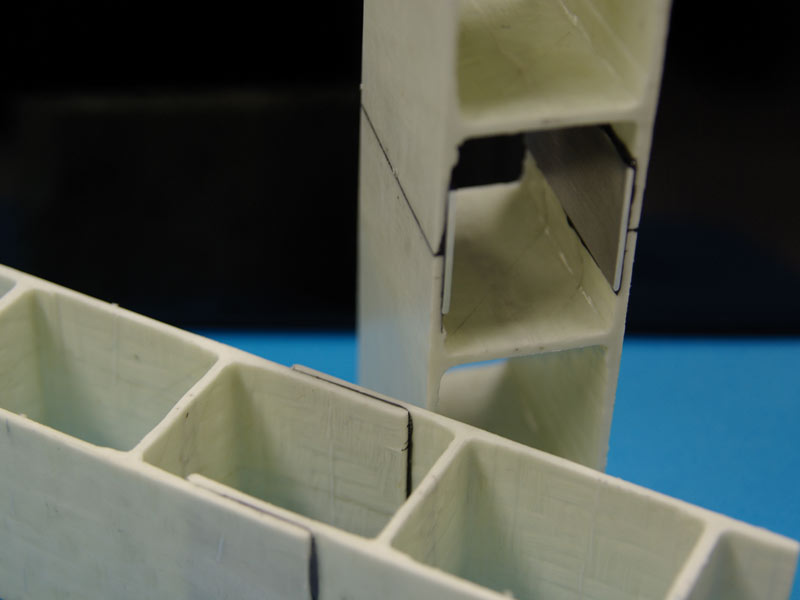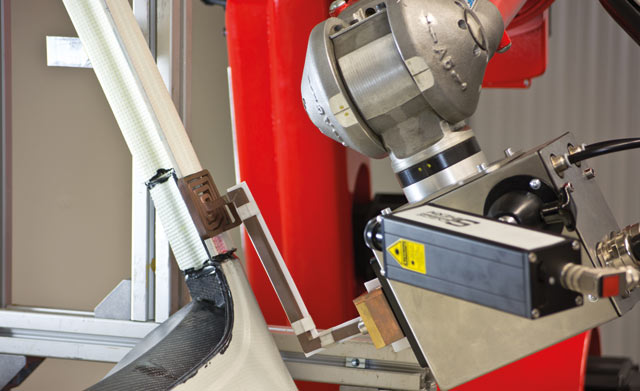Consequently, the group “Adhesive bonding and fiber composite technology“ at the Fraunhofer IWS Dresden engineered and implemented easy-to-automate process steps enabling the bonding of planar and sculptured fiber-reinforced thermoplastic compounds. The following sub-process steps were analyzed and refined:
- Surface pre-processing,
- Selection of the adhesive,
- Adhesive application and curing,
- Documentation of transfer strength and ageing resistance.
These tasks were performed in close cooperation with the TU Dresden within the scope of the Collaborative Research Centre (SFB) 639 »Textile-reinforced Composite Components for Function-integrating Multi-material Design in Complex Lightweight Applications«.
Surface pre-processing:
Thermoplastics with low surface energy, such as polypropylene, cannot be bonded without additional effort due to their poor adhesion. As a result, they are rarely used for structural applications. Making use of physical methods for surface pre-processing or modified adhesive systems can improve adhesion, however. Atmospheric pressure plasma, as well as laser irradiation, are preferable methods to be used for flexible surface pre-processing. Both methods are primarily employed for surface cleaning (removal of plasticizers, release agents etc.) and to a certain extent for the functionalization of the non-polar plastic surface. In automated plasma pre-processing with low heat input, we succeeded in detecting the formation of functional groups. An increase in surface area can be achieved by laser surface structuring, in addition to surface cleaning and activating. Here the adhesive not only chemically interacts with the surface, but also anchors mechanically .
Selection, application and curing of adhesive:
To establish heavy-loaded structural bonded joints for fiber-reinforced thermoplastic compounds, modified adhesive systems based on polyolefins, epoxy resin, polyurethane, and acrylate were analyzed and their quasi-static adherence strength values were compared. To meet the process requirements of series production, research also considered the option of accelerated adhesive curing for the example of thermally sensitive fiberglass- reinforced polypropylene compounds. The purpose of this activity is to allow for larger-sized structures to be handled quickly and made available within a few minutes for the next process steps.
High frequency induction heating and the addition of ferromagnetic particles into industrial 1K- and 2K epoxy resin-based adhesive systems contributed to accelerated curing of the adhesive. We succeeded in reducing curing times of 60-90 minutes in the drying oven to 3-5 minutes. In the abovementioned processes, the fiberglass-reinforced thermoplastic parts were not subjected to any significant thermal impact, as it is typically the case during conventional curing in drying ovens, since the adhesive layer is heated locally in the targeted manner.
 Fraunhofer Institute for Material and Beam Technology IWS
Fraunhofer Institute for Material and Beam Technology IWS


